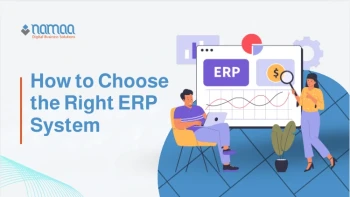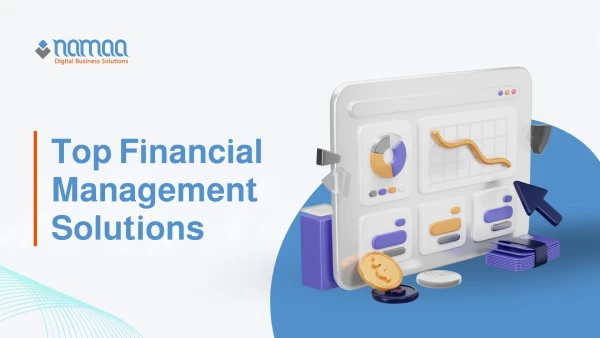App Store Optimization (ASO) is currently the most crucial factor for making apps visible to users in search results on app stores. With millions of apps available on Google Play and Apple’s App Store, what truly matters is that your app appears among the top results when users search. ASO helps attract users organically by improving the app title, description, and keywords, while also increasing conversion rates by enhancing the icon, screenshots, and ratings. In this article, we explain how a well-planned ASO strategy can significantly improve your app’s chances of reaching your audience and increasing downloads.
What is App Store Optimization (ASO)?
App Store Optimization, or ASO, is a set of processes and strategies aimed at improving your app’s visibility on app stores such as Apple’s App Store and Google Play. It can be compared to Search Engine Optimization (SEO) for websites, but specifically focuses on increasing app visibility in store search results, along with enhancing the conversion rate from visiting the app’s page to downloading it.
ASO includes several essential elements to achieve the best results. One of the most important is choosing the right keywords—those your potential users are likely to search for. This involves careful analysis of popular search terms and the competition around them, as well as understanding user behavior and needs.
In addition to keywords, the app’s title and description play a vital role in attracting and convincing users to download. The title should be catchy, clear, and include the main keyword that represents the app’s core function. The description should be detailed and comprehensive, highlighting the app’s main features and benefits, naturally incorporating related keywords.
ASO doesn’t stop at words—it also includes visual elements like the app icon, screenshots, and promotional videos. The icon should be unique and visually appealing, reflecting the app’s identity and functionality. Screenshots and videos should clearly demonstrate the app’s main features and usage, helping to form a positive first impression and encouraging downloads. Lastly, user ratings and reviews are crucial for building credibility and influencing others’ decision to download the app. It's important to encourage users to leave positive reviews and respond to feedback professionally.
Why is App Store Optimization (ASO) Important?
ASO is essential because it helps your app get discovered by a broader audience of potential users. Given the enormous number of apps available today, it's difficult for new or unoptimized apps to stand out. Without a solid ASO strategy, your app may get lost in the crowd and miss out on valuable download opportunities.
ASO is critical because it directly impacts several key factors for app success:
Increased Visibility: ASO helps your app rank higher in search results when users look for related keywords, boosting its visibility to the right audience.
High-Quality Users: ASO attracts users who are genuinely interested in your app and likely to use it regularly, by targeting accurate and relevant keywords.
Higher Conversion Rates: A well-optimized app page (with compelling title, description, visuals, and ratings) increases the chances that a user will download the app after viewing the page.
Cost-Effective Growth: ASO is often more affordable in the long run compared to paid advertising. It enables sustainable organic traffic to your app page.
Enhanced Credibility: Apps that appear at the top of search results are often perceived as more trustworthy and higher quality.
Global Expansion: ASO helps in targeting specific regions and languages, supporting your app's global reach.
ASO Strategies to Reach More Users
1. Keyword Research and Selection
Visibility starts with understanding how users search for similar apps. Keywords are the bridge between user intent and your app. Conduct thorough keyword research using tools like AppTweak, Sensor Tower, or MobileAction to analyze search volume, keyword difficulty, and your competitors’ usage.
Start with a seed list of keywords that describe your app, then expand with related terms or synonyms. For instance, if your app tracks habits, go beyond “habits” and try “productivity,” “time management,” or “task scheduler.” Use keywords naturally within your app title and description to assist algorithms without disrupting readability.
2. Optimizing App Title and Description
The title is the first thing users see. It should be clear, appealing, and include your top keyword. Avoid long or vague titles. For example, instead of “Smart Task Organizer to Improve Daily Habits and Achieve Goals,” try “Habit Tracker: Easily Reach Your Daily Goals.”
On Google Play, the description significantly influences ranking. Start with a clear summary of the app’s function and value, then explain each feature in detail. Use a practical tone and highlight how your app solves a specific problem. On the App Store, the description doesn’t directly impact search ranking, but it does influence download decisions—especially the first three lines, so make them count.
3. Improving Visual Elements
Design plays a big role in catching user attention after the name and ratings. The icon should be simple, recognizable, and represent your app’s function. Use colors and fonts that quickly convey the app’s identity.
Screenshots should highlight key features and show a positive user interface. Add text annotations to explain each screen. A short promotional video (30–60 seconds), especially for Google Play, can boost conversion rates and give users a quick preview.
4. Ratings and Reviews
No one wants to download an app rated below 3 stars. Reviews influence both user decisions and app ranking algorithms. The more positive reviews you get, the higher your app will rank.
Encourage users to rate the app after a short period of use—for example, after completing a task or achieving a result. Use smart in-app popups that don’t disrupt the user experience. Also, respond seriously and respectfully to negative reviews. Show users that you’re committed to fixing issues and improving the app. This builds trust and loyalty.
5. Regular App Updates
App stores favor active apps that are regularly updated. But updates should be meaningful—bug fixes, performance improvements, or useful new features.
Update logs show users that your app is alive and evolving. Write clear and direct update notes explaining what changed and why.
6. Analyze Competitors and Learn from Them
One of the fastest ways to improve your ASO strategy is to study what’s working for others. Pick 3–5 similar apps and examine their store presentation, titles, descriptions, keywords, icons, and even how they respond to reviews.
Use competitive analysis tools to track their performance and changes. Learn from their strengths and weaknesses to find gaps you can fill—such as keywords they’re not using or features they haven’t explained well.
7. A/B Testing to Improve Conversion Rates
Don’t guess what works—test it. A/B testing allows you to try different versions of your app’s visual elements (like screenshots or icons) and compare performance. This gives you real data on what users prefer.
Start by testing one change at a time (e.g., different screenshot styles or icon designs) to understand what truly impacts downloads.
8. Localization and Reaching a Wider Audience
If your app serves more than one market, localization becomes essential. It's not enough to just translate the text; the content must be adapted to reflect the local culture, including images, examples, colors, and even design.
Your app could perform exceptionally well in a market you weren't originally targeting, simply if it’s localized properly. Start by focusing on languages with large markets (like Spanish, Portuguese, and Russian), then expand localization based on your app’s performance.
9. Choosing the Right Category for Your App
App stores organize applications into categories to help users browse easily. Choosing the correct category not only affects visibility but also your ranking among competitors. For example, a meditation app could fall under "Health & Fitness" or "Lifestyle," depending on its main features.
Choose the category that best matches your audience and the app’s core function. Avoid crowded categories if you can stand out in a subcategory. In some cases, you can add a secondary category to increase visibility.
10. Track Performance and Continuously Improve Strategy
After implementing all the previous steps, don’t stop there. Regularly monitor your app’s performance using tools like Firebase, App Annie, or Adjust. Keep an eye on key metrics like downloads, usage time, conversion rates, and the keywords driving traffic.
This data will help you understand what’s affecting performance most and where adjustments are needed. Make ASO optimization an ongoing part of your strategy, not just a one-time task.
App Store Optimization (ASO) is not a simple or one-time task—it’s a continuous effort that requires monitoring, testing, and regular updates. By executing effective strategies that include keyword research, optimizing visual and textual content, engaging with users, and leveraging data smartly, you can ensure your app not only appears in search results but also gets downloaded by the right users.
Results won’t appear overnight, but they accumulate over time and give you a long-term competitive edge in the app market.
Summary:
✔️ Precise keyword research: 80% of downloads come from in-store search, so choosing the right keywords directly improves visibility.
✔️ Optimizing title and description: Titles with keywords increase visibility by 10–20%, especially on Google Play.
✔️ Professional visual elements: Apps with professional screenshots have a 25% higher conversion rate than others.
✔️ Gathering positive ratings and reviews: Apps rated 4 stars or higher get downloaded 89% more than those with lower ratings.
✔️ Regular updates: 57% of users prefer apps that are continuously updated, boosting trust and engagement.
✔️ Competitor analysis: Monitoring competitors helps you discover underused keywords that can quickly improve your ranking.
✔️ A/B testing to increase conversion: Tests can improve download rates by 15–30% by optimizing icons or screenshots alone.
✔️ Localization for multiple markets: Apps localized in over 5 languages see a 128% increase in downloads compared to non-translated apps.
✔️ Choosing the right category: Picking a less competitive category can boost your app’s ranking in that category by up to 40%.
✔️ Performance tracking and continuous improvement: Continuous optimization based on user data can double downloads in 3–6 months.
 Home
Let's think together
Articles
About
Contact Us
عربي
عربي
Home
Let's think together
Articles
About
Contact Us
عربي
عربي
 A Complete Guide to Increasing User Reach (2).webp)


.webp)
.webp)



